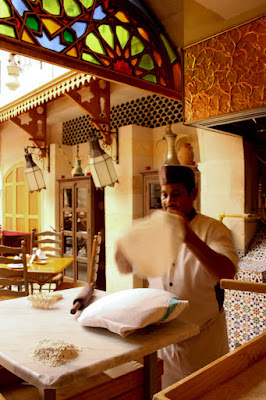 We've talked about this before, haven't we...?
We've talked about this before, haven't we...?But that was ages ago (at least 5 weeks), when I was still using the Canon Powershot, and it was doing all kinds of compensation for me, trying to fix my photos when I didn't want them fixed. (although at that point I did not realise that I didn't want them fixed. How far I have come...)
Now we have the photo-educated (at least partially) me, and I know there is blur... and there is bleh (rhymes with meh, and is usually accompanied by a downturning of the lips and a non-chalant shrug). I am learning that there are different ways we can use our cameras to convey a story in our images - I no longer take a photo of what I want to remember, I create an exposure from life that conveys the feeling of the moment. Blur can help us mould the image into the story we want. Bleh is simply a mistake with focus or shutter speed.

 So far, I have found three ways that I use blur constantly. First is the focal blur associated with a low F-stop aperture (ie, the wide aperture). It creates a stronger sense of depth, and also isolates the focal point of the image, making it more prominant. It assists in showing that the focal point is singularly a thing of beauty, but is a part of a bigger story that cannot be ignored. In this first image, The roses are beautiful on their own, but if I had ignored the entire setting, there would not be the warm and exotic feeling that is invoked with the Moorish arch and dreamy sunlight. The second shows the pattern of the chairs and table settings so perfectly placed, but the detail of the wicker chair and the mosaic table are pronounced in the fore-ground - showing that there is more than one beautiful aspect to this space. The third would just be a bowl of fruit it there were no background, but I didn't want the background jumping into the frame - that would take the focus away from the shine on the apples and the dimpled texture of those perfect little oranges.
So far, I have found three ways that I use blur constantly. First is the focal blur associated with a low F-stop aperture (ie, the wide aperture). It creates a stronger sense of depth, and also isolates the focal point of the image, making it more prominant. It assists in showing that the focal point is singularly a thing of beauty, but is a part of a bigger story that cannot be ignored. In this first image, The roses are beautiful on their own, but if I had ignored the entire setting, there would not be the warm and exotic feeling that is invoked with the Moorish arch and dreamy sunlight. The second shows the pattern of the chairs and table settings so perfectly placed, but the detail of the wicker chair and the mosaic table are pronounced in the fore-ground - showing that there is more than one beautiful aspect to this space. The third would just be a bowl of fruit it there were no background, but I didn't want the background jumping into the frame - that would take the focus away from the shine on the apples and the dimpled texture of those perfect little oranges.  The second way to use blur effectively is to let a low shutter speed display movement. Sometimes it doesn't work, particularly when you get ghost-like heads that remind me of the bad spirits in the movie Jacob's Ladder (I still get nightmares with those freaky devils in them), but other times it can breath life into a still-life, and help make the viewer feel they are inside the image. This baker had stopped work and posed for me after I took this shot, but once that dough was on the table it was just a flat still mound of flour and water - not his particular art.
The second way to use blur effectively is to let a low shutter speed display movement. Sometimes it doesn't work, particularly when you get ghost-like heads that remind me of the bad spirits in the movie Jacob's Ladder (I still get nightmares with those freaky devils in them), but other times it can breath life into a still-life, and help make the viewer feel they are inside the image. This baker had stopped work and posed for me after I took this shot, but once that dough was on the table it was just a flat still mound of flour and water - not his particular art.The third is in post production. Here I have roses again - they have seriously got to be one of the most photogenic things on the planet. But maybe that's a girl thing. Anyways... Using a soft focus in post production can do two things - it can disguise boring edges of the photograph that are still required for the composition - for example, I want the dirty background to convey the feeling that these were taken in a market. I also want the corners of the image in the foreground because although they are just leaves, without them I would have an image shaped like an inverted arch, and that's just stupid. The soft focus also gives an ethereal quality to the flowers - now they are romance, perfume, summer in France - whatever the viewer fancies - they are not just roses in a bucket.
If you want to know more about where I was when I took these photos, look at my life-blog, dubai-ified over the coming days. I will be taking about my lunch down at Khan Murjan - it's a photographer's paradise and the baklava is making me fat just thinking about it.
